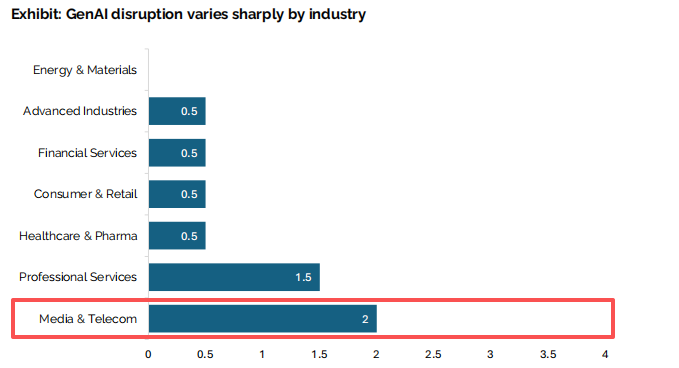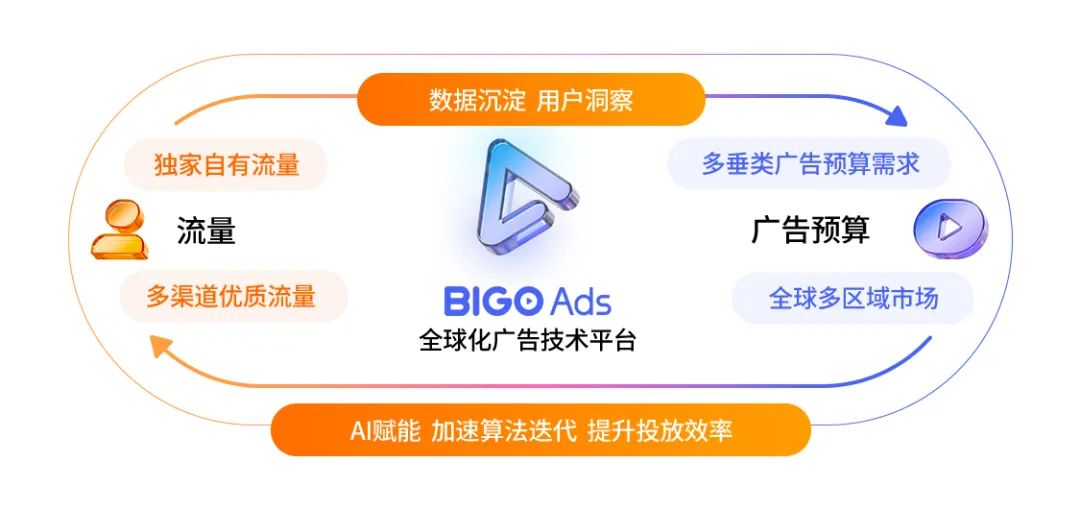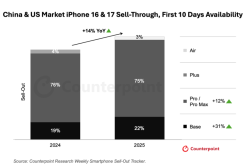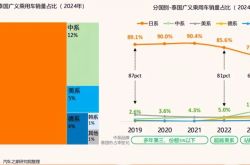AI Accelerates the Flywheel of Advertising Technology: Which Tech Companies Exhibit Greater Explosive Potential?
![]() 08/29 2025
08/29 2025
![]() 645
645

On August 28, NVIDIA's second-quarter report revealed astonishing results, with revenues totaling $46.7 billion. This "shovel seller" of the AI era not only showcased impressive chip sales figures but also signaled the full arrival of the AI era.
Since 2025, the market has increasingly focused on the commercialization process of AI, with multiple vertical fields gradually witnessing a value explosion. The latest research report from MIT highlights that the structural transformation of AI within the technology and media industries is accelerating, with the AI disruption index in the advertising industry ranking highly.

Image source: MIT | The GenAI Divide STATE OF AI IN BUSINESS 2025
With the advent of the AI technology bull market, what truly excites the market is the exceptional growth curves achieved by emerging players like AppLovin. This earnings season, the AI advertising track has emerged as the focal point for a new round of value reassessment in tech stocks.
Main Theme of the New Bull Market:
Globalization + AI Applications Drive Value Reassessment
In the new wave of technology investment enthusiasm, AI applications have emerged as the primary theme pursued by market funds. The advertising sector has led the way in realizing value reassessment. AppLovin's market capitalization on the U.S. stock market has surged sevenfold throughout the year. However, influenced by previous market sentiment, the valuation of relevant companies in the Chinese concept stock sector remains generally low. Which companies within this sector have the potential to grow alongside AI advertising? Benchmarking companies and industries is an investment idea that frequently appears and is relatively clear in the secondary capital market.
From an industry comparison perspective, JOYY's BIGO Ads and tech companies such as AppLovin exhibit similar growth logic: technology-driven business efficiency improvement, global operations, and the establishment of barriers in the advertising technology field. This indicates that the future does not solely belong to technology giants making significant moves in the AI field. Companies that can genuinely embed technology into business scenarios and grasp the pulse of the global market also have the potential to navigate through cycles.
JOYY, AppLovin, Mobvista, and others are up-and-coming players in the advertising technology sector. However, unlike other companies, JOYY also holds the trump card of "live streaming fundamentals".
Most companies represented by AppLovin started with games or advertising investment in the early stages and later transformed to focus on the advertising technology track. JOYY, on the other hand, already had a globally deployed live streaming business, which generated $375 million in revenue in the second quarter, with positive quarter-on-quarter growth. The stable cash flow from the live streaming segment, coupled with $3.3 billion in net cash on the balance sheet, provides financial and strategic support for the company's expansion into AI advertising and intelligent e-commerce tracks.
Currently, JOYY has entered the dual-wheel drive stage of "live streaming fundamentals + new AI advertising engine," yet its market valuation still lags behind this structural transformation. Judging from JOYY's second-quarter report, the advertising business flywheel is accelerating, becoming the main driver for the company's valuation growth. In the second quarter of 2025, the group's revenue was $508 million, of which non-live streaming business revenue accounted for over a quarter, marking a 25.6% year-on-year increase.
Compared to another listed company in the advertising technology track, Mobvista, JOYY's annualized advertising scale is close to one-third of Mobvista's revenue last year. However, in terms of valuation, Mobvista's current trailing twelve months (TTM) P/E ratio stands at 94 times, while JOYY's forecast P/E ratios for 2025 and 2026 are only 9.8 times and 8.6 times, respectively. This misalignment represents significant potential for reassessment.
Advertising Becomes the Best Track for AI Commercialization
Emerging Players Reshape Growth Logic
Although technology giants have invested heavily in AI infrastructure, those clearly demonstrating profitability are still concentrated in a few areas. As the market gradually returns to rationality, what excites investors is that advertising technology has emerged as one of the best tracks for AI implementation, and the "AI + commerce" path has become a bridgehead for reassessing market conditions by realizing value monetization.
Advertisers' budgets naturally pursue return on investment (ROI). The global traffic structure is shifting from centralized to decentralized, with increasing demand for advertising placement. Advancements in AI algorithms and computing power can precisely match this demand. The combination of these factors has ushered in the largest structural transformation in the advertising industry in nearly a decade.
It's worth mentioning that for technology giants, AI is primarily used to optimize existing advertising systems and tap into existing efficiency. However, due to their relatively rigid traffic structure, AI brings more marginal improvements rather than significantly altering the market landscape.
In contrast, emerging players are reshaping the market landscape with their deep accumulations in vertical fields and agile business structures. In the second quarter of 2025, AppLovin's revenue increased by 17% year-on-year to $1.259 billion, and its adjusted EBITDA doubled year-on-year to $820 million, far surpassing market expectations.
In JOYY's second-quarter report, we can observe similarly impressive advertising business growth trajectories. In the second quarter, JOYY's advertising business, BIGO Ads, recorded a year-on-year revenue increase of approximately 29%. This growth momentum primarily stems from the accumulation of rich application scenarios and high-quality data across multiple verticals.
Relying on scenario and data accumulation, JOYY's BIGO Ads advertising technology platform conducts in-depth recognition and dynamic modeling of users' intentions, interests, and behavior patterns on the traffic side based on large language models (LLMs), achieving precise portrayal of mid-to-long-tail traffic and emerging vertical users. This significantly enhances user understanding efficiency and ad placement accuracy in cold start scenarios.
On this foundation, AI comprehensively empowers the entire advertising chain, significantly improving advertisers' conversion efficiency and developers' monetization returns, helping global advertising clients rapidly increase volume in a highly competitive market while vigorously promoting the rapid expansion of BIGO Ads across various verticals. With the advanced algorithms and technical support of BIGO Ads, Southeast Asia's leading game company, Rocket Game Studio, successfully broke its single-day installation record, and the return on ad spend (ROAS) of the flagship game OpenMyGame in the Russian market doubled, significantly improving ad placement efficiency.
This means that with the empowerment of AI, emerging players like BIGO Ads can not only outperform giants in growth but also help clients achieve higher return on investment (ROI), thereby consolidating their competitiveness in the global market.
From AppLovin to BIGO Ads, a new growth paradigm driven by the combination of the "technology dividend" and the "global market" is taking shape. The value flywheel of technology and ecosystem-leading companies is accelerating.
Three Trends in the Advertising Technology Market Drive the Growth Flywheel with "Technology + Ecosystem"
From the perspective of the industry's future, the global advertising market is undergoing profound changes, shifting from incremental to stock, extensive to refined, and traffic-driven to algorithm- and computing power-dominated. AI is assisting technology enterprises with data accumulation, technological foundations, and ecosystem layouts in transforming their long-term accumulated assets into measurable commercial value.
First, competition on the traffic side has become more high-dimensional. With users' attention becoming fragmented, advertisers are no longer satisfied with extensive reach but hope to deeply understand user intentions with AI to find the most suitable scenario touchpoints.
Therefore, JOYY's global portfolio of multiple products, constituting a global user pool with over 263 million monthly active users, has become a core asset in the new cycle of the advertising industry. More importantly, BIGO Ads is not limited to its own traffic but also integrates high-quality third-party traffic through collaboration with platforms such as AppLovin MAX and Unity LevelPlay, expanding to new channels like connected TVs (CTVs). This "self-owned + third-party" model enables JOYY's BIGO Ads business to possess both depth and breadth in data closed-loop and placement stability, better serving the strong demand for placement in vertical scenarios like gaming.
Relying on exclusive self-owned traffic and high-quality traffic from multiple channels, coupled with increased customer data feedback and enhanced multi-channel data attribution capabilities, JOYY has established more precise user personas. Meanwhile, BIGO Ads demonstrates efficient iteration capabilities in cold start and vertical model iterations, further improving ad placement efficiency, which in turn drives accelerated growth in advertisers' budget demands and traffic.

Second, under the backdrop of globalization, cross-regional and cross-channel marketing needs are increasing daily. With the tightening of privacy policies in various countries and regions, the data monopoly advantages of traditional traffic giants such as Google and Meta have been weakened, and advertisers are more inclined to diversify their placements.
BIGO Ads has demonstrated strong penetration in this context, with robust performance across multiple vertical budgets like IAA, IAP, and web-based effect advertising, with daily revenue continuously hitting new highs. Whether it's the 24.2% quarter-on-quarter growth in North America or the high single-digit increase in the European market, it indicates that its algorithms and placement capabilities are being recognized by global advertisers.
Finally, AI technology itself is becoming a new threshold. Advertisers are increasingly relying on real-time personalized advertising generation, which requires powerful computing power and efficient model iteration.
Under the trend of "one person, thousands of faces" effect advertising, high-quality data and algorithm optimization have built the competitive advantage of BIGO Ads. Benefiting from JOYY's global network infrastructure and the mid-platform capabilities of engineering efficiency optimization, BIGO Ads also gains additional advantages in terms of computing resource costs. This balance between technology and cost is directly reflected in financial performance, with JOYY's adjusted EBITDA increasing by 25.7% year-on-year in the second quarter, and profitability steadily improving.
In summary, in the profound value reshaping of the advertising market, companies with leading technology and ecosystems have gradually established a positive cycle: "high-quality data driving algorithm iteration - improved advertising effectiveness driving ecosystem expansion - achieving revenue growth and profit release." This is precisely the logic behind market reassessment.
Looking ahead, the AI + advertising track has strong growth momentum. The latest in-depth research from Goldman Sachs predicts that AI will disrupt the global advertising profit pool of approximately $470 billion in the coming years, and the growth dividends for leaders have yet to be fully realized.
For investors, JOYY's value lies in its stable cash flow from the live streaming fundamentals and the high growth potential driven by the global advertising technology platform BIGO Ads. The current valuation is significantly lower than its future technology monetization potential. In the current market that emphasizes AI implementation and profitability, BIGO Ads has global delivery capabilities, and the financial report has verified the platform's AI business model. JOYY is poised to become an important player in this trillion-scale track.








